Seed Sowing Geraniums Is The Best Option If A Large Number Of Plants Are Required
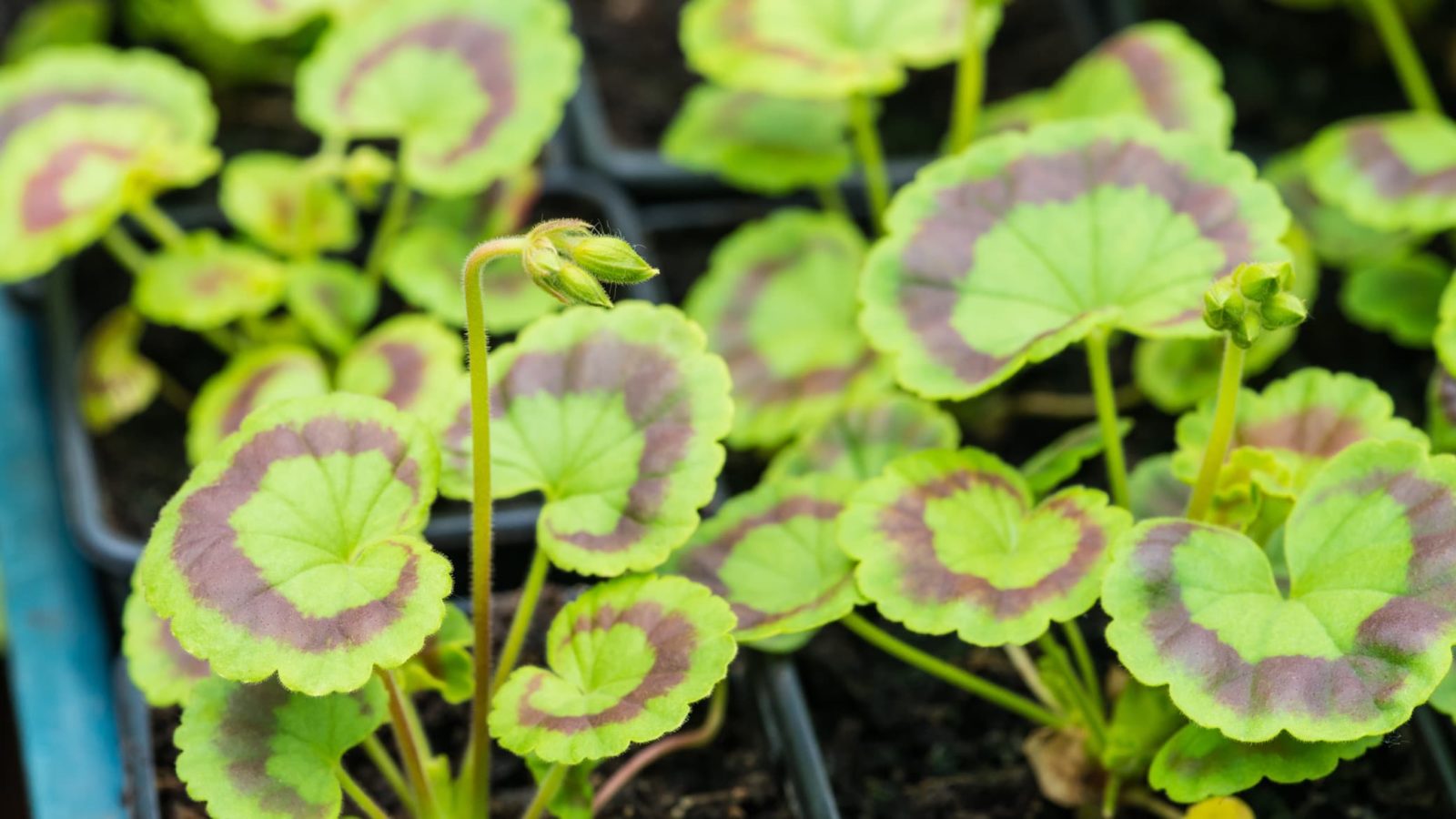
PERENNIALS > GERANIUMS > SOWING

Elizabeth is a Permaculture Garden Designer, Sustainability Consultant and Professional Writer, working as an advocate for positive change. She graduated from the University of St. Andrews with an MA in English and Philosophy and obtained a Diploma in Applied Permaculture Design from the Permaculture Association.
Reviewed By COLIN SKELLY

Colin is a Horticulturist and Horticultural Consultant with experience in a range of practical and managerial roles across heritage, commercial and public horticulture. He holds the Royal Horticultural Society’s Master of Horticulture award and has a particular interest in horticultural ecology and naturalistic planting for habitat and climate resilience.
Contributions From EMILY CUPIT

Emily is a Gardening Writer, Photographer and Videographer from Derbyshire, UK. She is the Founder of Emily's Green Diary - a community of more than 75,000 people who share in her gardening journey.
IN THIS GUIDE
GERANIUM GUIDES
Container Growing
Cuttings
Deadheading
Feeding
Growing From Seed
Pruning
Varieties
Winter Care
Both tender Geraniums (technically Pelargoniums) and hardy Geraniums are popular additions to UK gardens, and both can be grown from plug plants or cuttings.
“Cuttings or divisions are the easiest means of propagating Pelargonium and Geranium, but seed sowing is the preferable option if a large number of plants are required, such as for summer bedding,” says Colin Skelly, a Master Horticulturist.
Many Geranium types can also be cultivated from seed by following this simple process:
- Sow Pelargonium seeds in late winter indoors or in another frost free location.
- Sow hardy Geranium seeds in autumn or in spring.
- Prepare suitable seed trays or pots filled with a seed starting compost.
- Sow the seeds on a firmed surface, and cover lightly with compost/ grit.
- Wait for germination to take place.
- Prick out and pot up seedlings once they are large enough to handle.
- Grow on and then plant out in late spring.
If you are looking to grow Pelargonium in your garden from seed, Zonal bedding type Pelargoniums and species like Pelargonium odoratissimum can relatively easily be grown or propagated in this way.
| Difficulty | Moderate |
| Equipment Required | Seeds, pots or seed trays, potting medium, heated propagator (optional) |
| When To Sow | February – April, September – October |
| When To Plant Out | May – June |
Hardy Geraniums can often also be sown from seed.
However, this is a long and time-consuming business and is not usually the easiest way to obtain these plants for your garden.
It is worth noting that some Geranium species and cultivars will come true from seed while others will not.
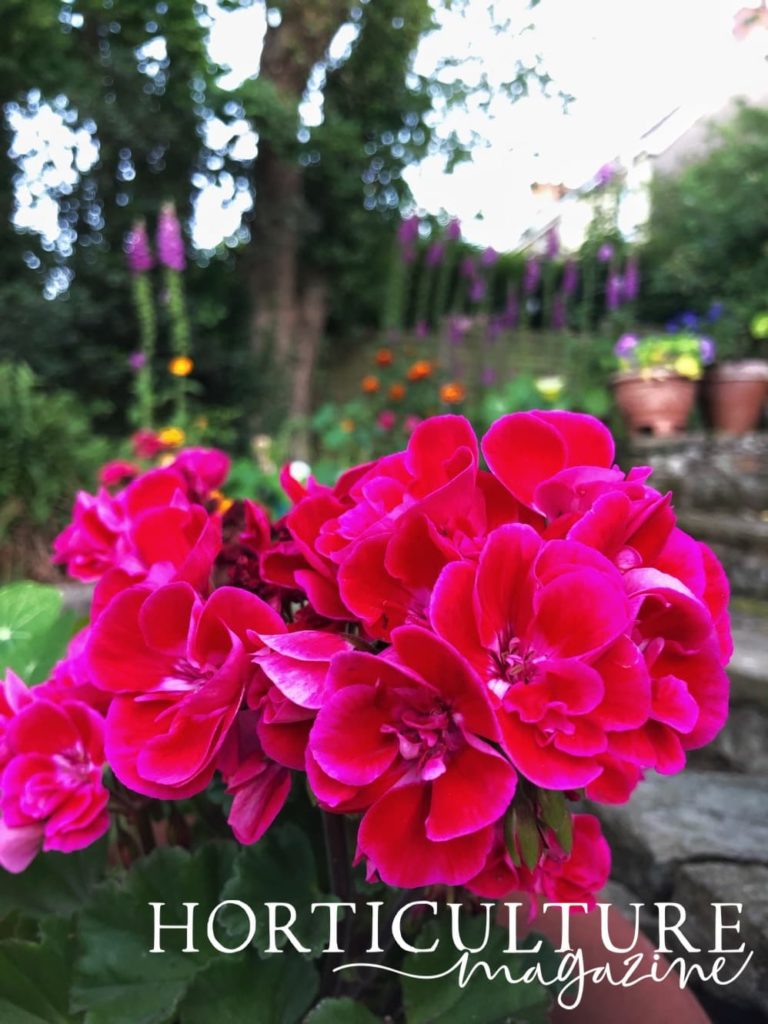
Hardy types grown from seed can usually take a couple of years to reach their full potential.
Hardy Geraniums often self-seed readily, and volunteer seedlings can easily be potted up and placed elsewhere in your garden.
Read on for more information about this process – just remember that there will be a lot of variance depending on which specific type and cultivar of Geranium you plan to grow.
When To Sow Geranium Seeds
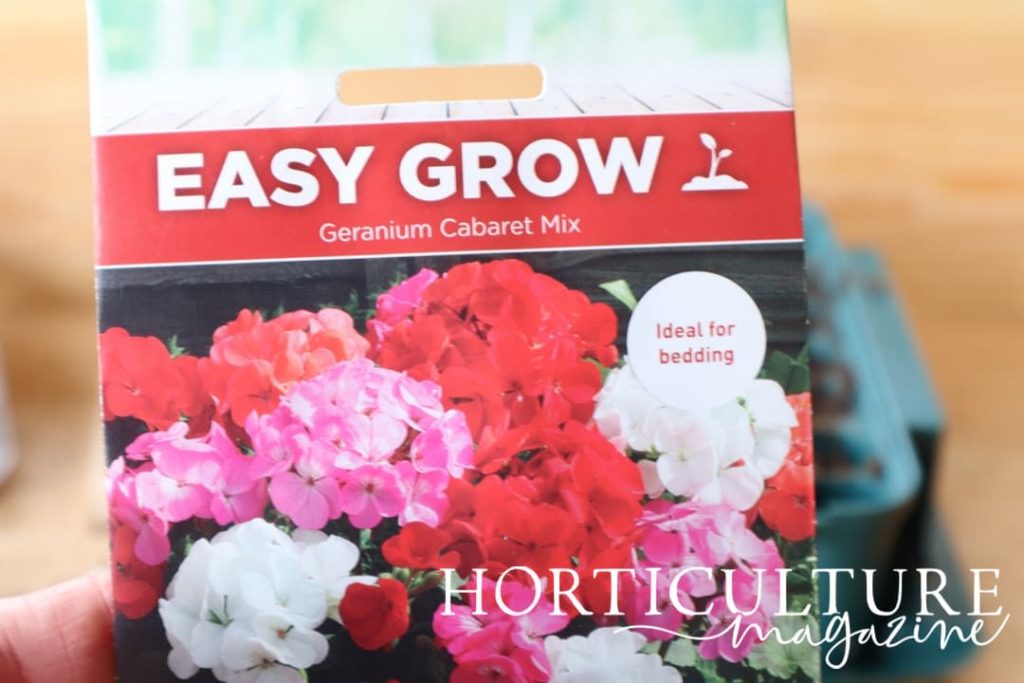
Pelargonium seeds should be sown in late winter (late January/ February) indoors or under cover.
For many types, a heated propagator will be required to provide sufficient temperatures for good germination rates.
Typically, seeds of tender types will germinate best between 22-26°C and as much light as possible.
Hardy Geranium seeds can be sown either in autumn or in spring.
1) Prepare Suitable Containers
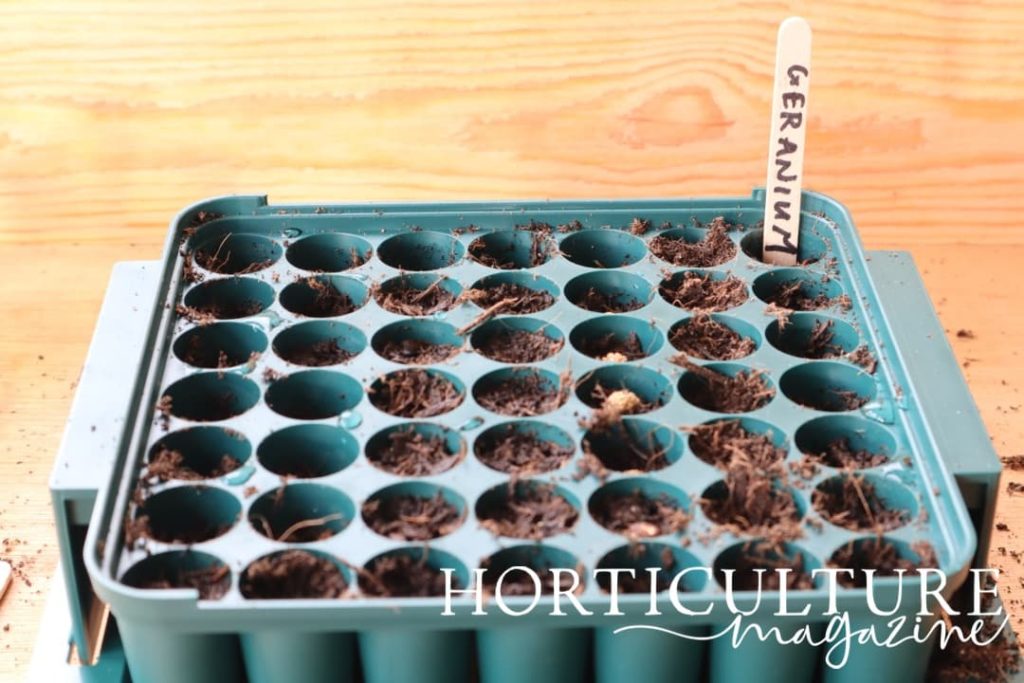
Geraniums can all be sown into seed trays or small pots.
These should be filled with a suitable seed-starting compost or growing medium, which is moist yet free-draining.
Using a soil-less potting medium can be a good idea as Geraniums can sometimes be prone to fungal issues like damping off.
Make sure that you practice good hygiene to reduce the chances of an issue of this type.
2) Sow Geranium Seeds
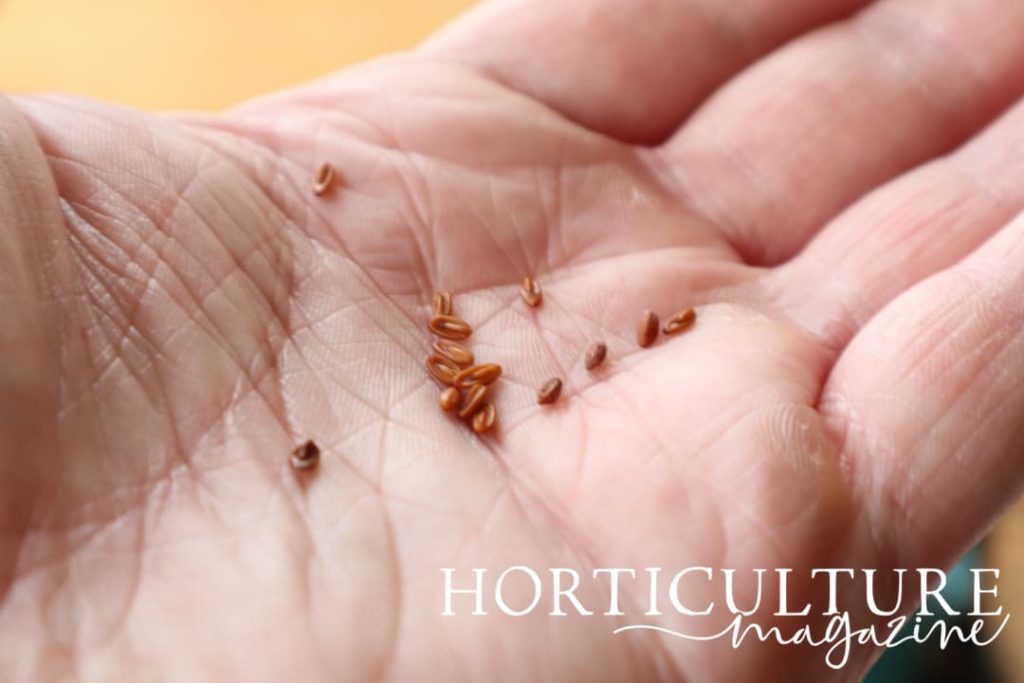
Both pelargonium and hardy Geranium seeds should be pressed evenly into the firmed surface of the moist growing medium, then covered over only lightly with a mix of compost and grit.
3) Wait For Germination
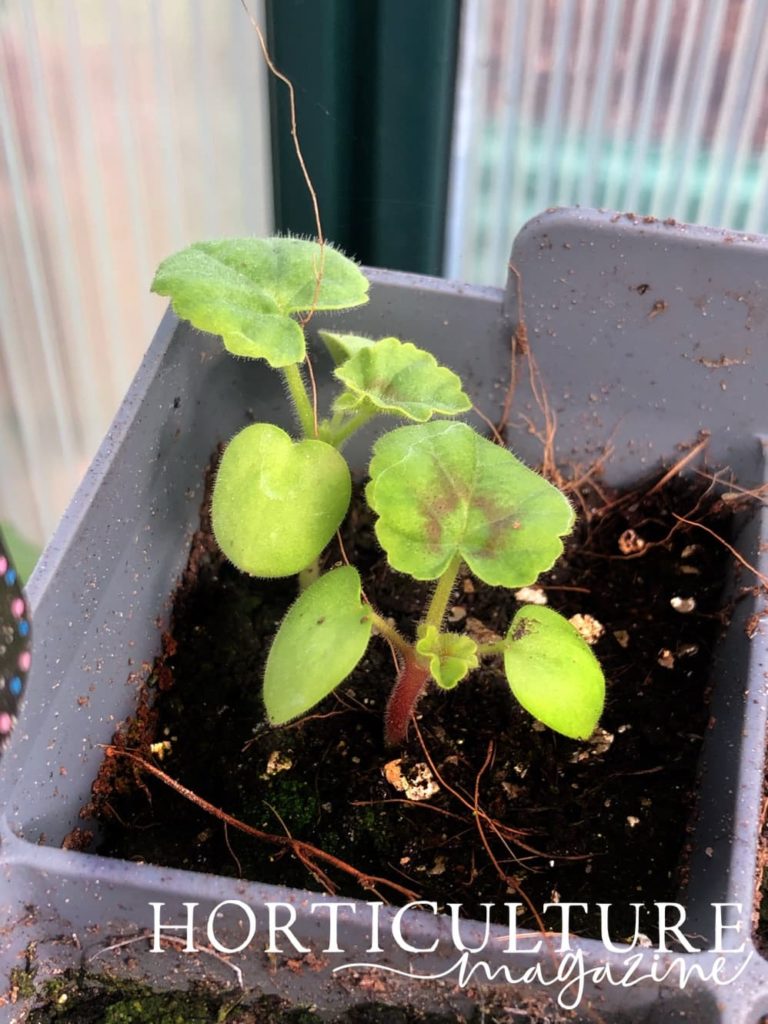
In a bright location, indoors or under cover, in suitable conditions, Pelargonium seeds can be expected to germinate within a few weeks, and most types should flower around 16 weeks from sowing.
With hardy Geraniums, it is important to make sure that the medium does not dry out completely.
Hardy Geraniums may germinate at different rates after a period of cold stratification, but usually, the main flush of germination, whether the seeds are sown in autumn or early spring, is expected in late spring.
Most species flower a year after germination, but some take two years.
4) Prick Out & Pot On Geranium Seedlings
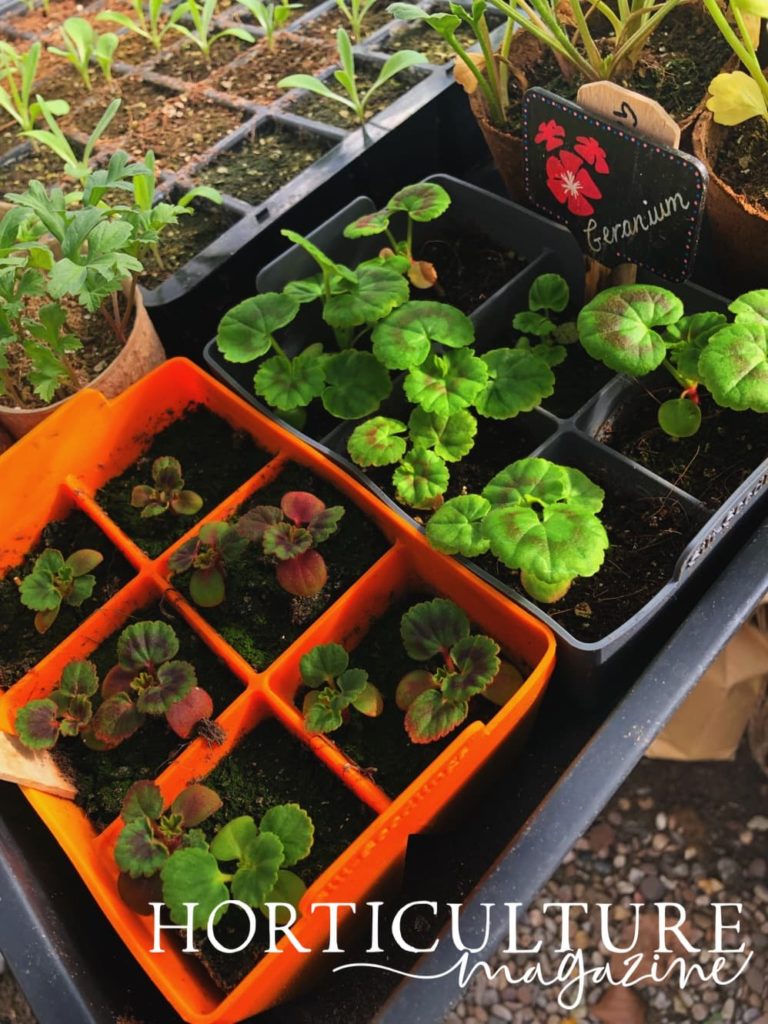
Once Pelargonium or Geranium seedlings are large enough to handle, these can then be pricked out and potted into pots filled with a good quality peat-free compost.
5) Plant Out From Late Spring
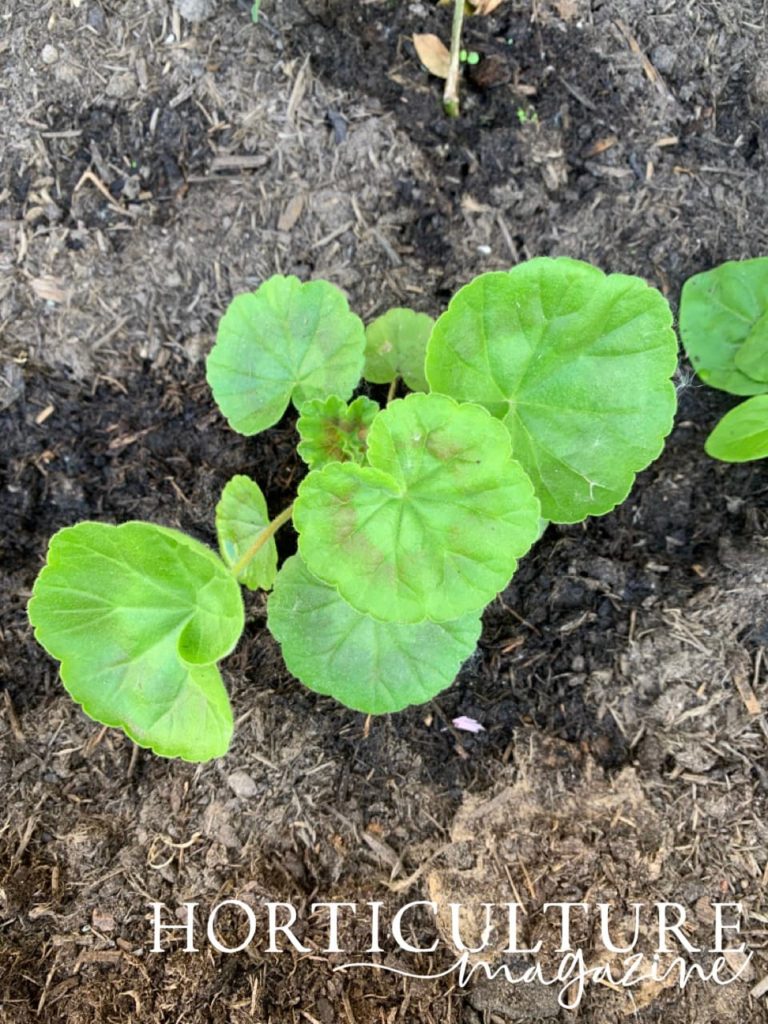
Once they have rooted strongly, Geraniums can be planted out from late spring.
With tender types, it is of course of paramount importance that you do not plant out too early, as a late frost could kill these plants.
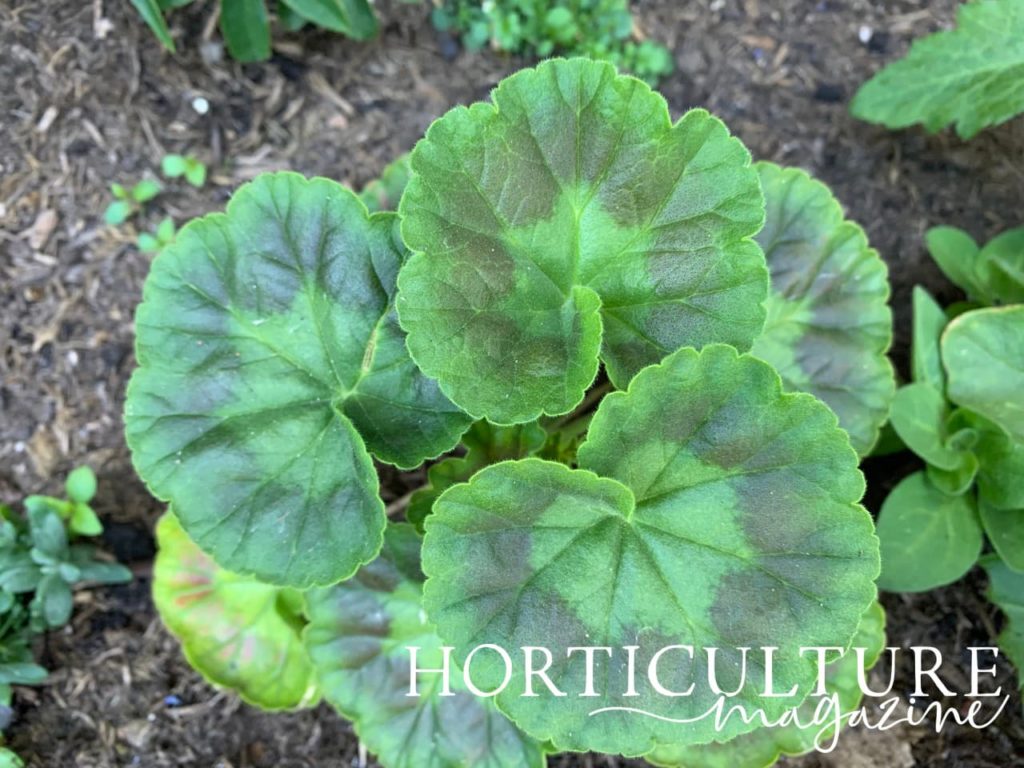
Make sure that you harden off plants sown and grown on indoors before planting out.
Also, ensure that you choose a planting position for your new plants that is suited to the particular species or cultivar that you have chosen to grow.
